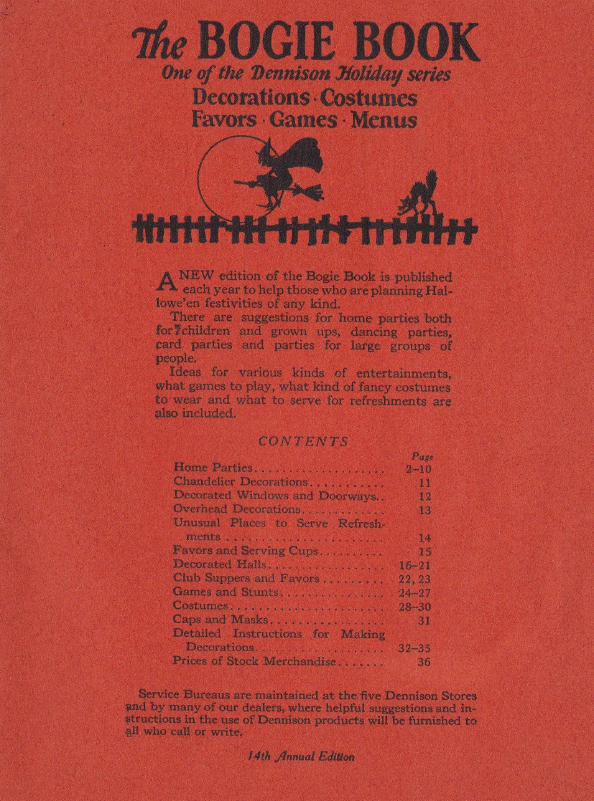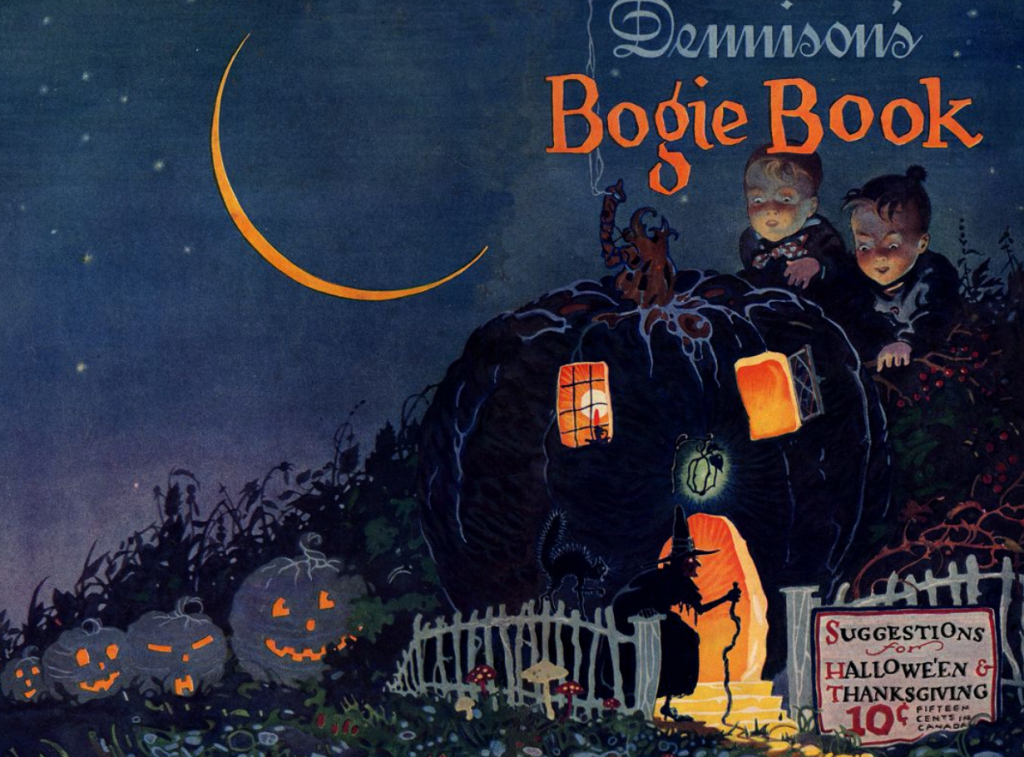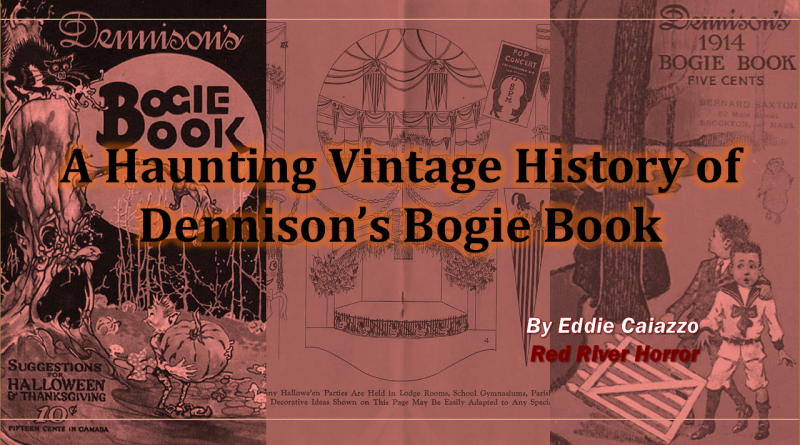A Haunting Vintage History of Dennison’s Bogie Book
The Dennison’s Bogie Book holds a special place in the annals of Halloween history, capturing the essence of early 20th-century spooky celebrations.
Launched in 1909 by the Dennison Manufacturing Company, this series of booklets became an indispensable guide for Halloween enthusiasts, offering a treasure trove of ideas for parties, costumes, decorations, and games.
Origins and Purpose
Dennison Manufacturing Company, originally known for its paper products, saw an opportunity to expand its market by tapping into the growing popularity of Halloween. The Bogie Book was conceived as a marketing tool to promote Dennison’s crepe paper and other decorative items. The first edition, published in 1909, was an instant hit, providing readers with creative and practical ideas for Halloween festivities.
Each edition of the Bogie Book was packed with a variety of ideas designed to inspire and delight, and yes…buy the corresponding Dennison products. The booklets featured detailed instructions for making costumes, decorating homes, and organizing party games. The emphasis was on using Dennison’s products, which included crepe paper, die-cut decorations, and other paper goods, but the Bogie Book also included menus and recipes ensuring that hosts could plan a complete Halloween party experience.

One of the most charming aspects of the Bogie Book was its illustrations. The covers and pages were adorned with whimsical and spooky artwork, depicting witches, ghosts, jack-o’-lanterns, and other Halloween icons. These illustrations not only provided visual inspiration but also added to the book’s appeal as a collectible item.
The popularity of the Bogie Book grew steadily over the years, reflecting the increasing enthusiasm for Halloween celebrations in the United States. By the 1920s, Halloween had become a major holiday, and the Bogie Book played a significant role in shaping the way people celebrated. The booklets were published annually, with each edition offering fresh ideas and updated designs to keep up with changing trends.
Dennison’s marketing strategy was extraordinarily effective. The Bogie Book was distributed widely through department stores, mail-order catalogs and even schools. This ensured that it reached a broad audience, from children planning their costumes to adults organizing elaborate parties. The book’s influence extended beyond individual households, as it also inspired community events and school activities.
Cultural Impact
The Bogie Book’s impact on Halloween culture cannot be overstated. It helped to popularize many of the traditions and symbols that are now synonymous with the holiday. For example, the emphasis on costumes and decorations contributed to the transformation of Halloween from a simple autumn celebration to a full-fledged festive occasion. The book also played a role in promoting the idea of Halloween as a family-friendly holiday, with activities and ideas suitable for all ages.
Moreover, the Bogie Book’s legacy can be seen in the continued popularity of vintage Halloween decorations and themes. Collectors and enthusiasts still seek out original copies of the booklets, and reproductions are available for those who want to recreate the charm of early 20th-century Halloween gatherings.

Dennison’s Bogie Book is more than just a collection of party ideas; it is a window into the past, offering a glimpse of how Halloween was celebrated in a bygone era. Its enduring appeal lies in its combination of creativity, practicality, and nostalgia. As we continue to celebrate Halloween with costumes, decorations, and parties, we owe a debt of gratitude to the Bogie Book for helping to shape the holiday into what it is today.
Whether you’re a Halloween enthusiast, a history buff, or simply someone who appreciates vintage charm, the Dennison’s Bogie Book is a delightful reminder of the magic and creativity that define this beloved holiday.


